Internet of Things (IoT): A Revolutionary Approach for Future
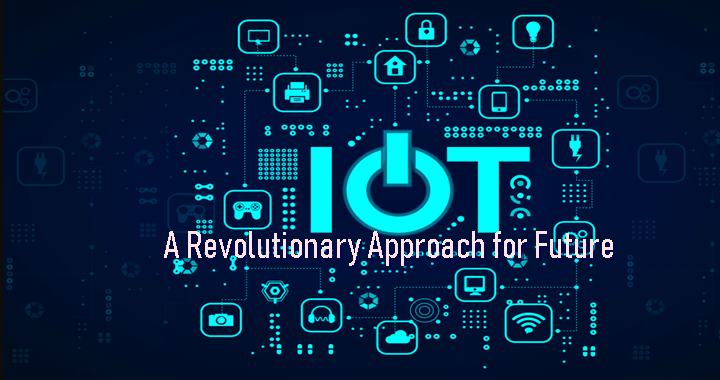
The Internet of Things (IoT) has emerged as a revolutionary technological paradigm that has transformed the way we interact with the world around us. This interconnected network of devices, sensors, and objects has given rise to a new era of possibilities, reshaping industries, enhancing efficiency, and enriching our daily lives. In this comprehensive exploration, we delve into the uses, benefits, and future prospects of IoT, ultimately highlighting its profound impact on society.
The Internet of Things (IoT) refers to the network of physical objects or “things” that are embedded with sensors, software, and other technologies to collect and exchange data with other devices and systems over the internet. These objects can be everyday items such as appliances, vehicles, wearables, industrial machines, and more. The main idea behind IoT is to enable these objects to communicate, analyze data, and make intelligent decisions without human intervention.
The history of the Internet of Things (IoT)
The history of the Internet of Things (IoT) is a tale of technological evolution, innovative ideas, and the convergence of various disciplines. From its early conceptualizations to its current revolutionary impact, IoT has transformed the way we interact with technology and the world around us.
- 1. Precursors to IoT: The seeds of IoT were long before the term coined, as various technologies paved the way for interconnected devices.
- 2. RFID Technology: Radio Frequency Identification (RFID) technology, developed in the mid-20th century, laid the groundwork for IoT by enabling the wireless identification and tracking of objects using radio waves.
- 3. Early Networking: The emergence of local area networks (LANs) and wide area networks (WANs) facilitated the exchange of data between computers and devices, setting the stage for IoT’s interconnected communication.
- 4. Birth of the Term “IoT”: The concept of IoT started gaining traction in the late 20th century, leading to the coining of the term.
- 5. Kevin Ashton’s Vision: In 1999, Kevin Ashton, a British technology pioneer, used the term “Internet of Things” to describe a system where physical objects could be tagged with identifying information and connected to the internet.
- 6. Prophetic Visions: Throughout the early 2000s, experts and researchers began foreseeing a world where everyday objects could communicate, paving the way for a new paradigm of interconnected devices.
- 7. Development and Pioneering Applications: The 2000s marked the beginning of IoT’s practical applications and prototypes.
- 8. Smart Refrigerators and RFID: Companies like LG and Whirlpool introduced smart refrigerators equipped with RFID technology to manage inventory and expiration dates.
- 9. M2M Communication: Machine-to-machine (M2M) communication systems emerged, enabling devices to communicate and share data without human intervention.
- 10. Ambient Intelligence: Researchers explored the concept of “ambient intelligence,” where environments would adapt to users’ preferences through sensors and communication technologies.
- 11. Rapid Expansion and Modern IoT: The early 2010s saw IoT’s exponential growth, with a surge in connected devices and applications.
- 12. Wearable Technology: Devices like fitness trackers and smartwatches entered the market, kickstarting the era of wearable IoT devices that monitor health and activity.
- 13. Smart Home Ecosystems: Companies introduced smart home devices such as thermostats, lights, and security cameras, driving the adoption of interconnected home automation systems.
- 14. Industrial IoT (IIoT): Industries embraced IoT to optimize operations, monitor machinery, and enable predictive maintenance, laying the foundation for Industry 4.0.
- 15. IoT in the Present and Beyond: Today, IoT is an integral part of our lives, shaping industries and paving the way for the future.
- 16. 5G Connectivity: The deployment of 5G networks promises higher speeds, lower latency, and greater device density, enabling real-time IoT applications.
- 17. Edge Computing: Edge computing, processing data closer to the source, enhances IoT’s real-time capabilities and reduces latency.
- 18. AI Integration: IoT’s fusion with artificial intelligence and machine learning empowers devices to learn from data patterns, improving automation and decision-making.
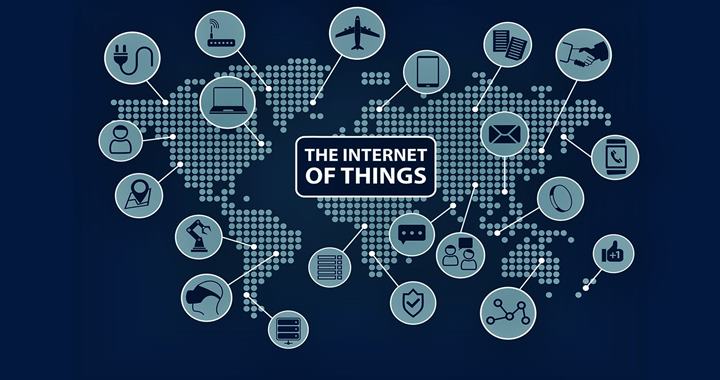
Key components of the Internet of Things
- Devices and Sensors: These are the physical objects or devices that are equipped with sensors to collect various types of data, such as temperature, humidity, motion, light, and more.
- Connectivity: IoT devices are connected to the internet or other networks using technologies like Wi-Fi, cellular networks, Bluetooth, Zigbee, and more. This connectivity allows devices to exchange data with each other and with centralized systems.
- Data Processing and Analytics: The data collected by IoT devices is often sent to cloud-based or edge computing platforms where it can be stored, processed, and analyzed. This enables businesses and individuals to derive insights from the collected data and make informed decisions.
- User Interfaces: Many IoT systems include user interfaces that allow users to monitor and control devices remotely through smartphones, tablets, computers, or dedicated applications.
- Automation and Control: IoT devices can be programmed to perform certain actions automatically based on predefined conditions. For example, a smart thermostat can adjust the temperature based on the user’s preferences and the current weather conditions.
- Security and Privacy: Given that IoT devices are often collecting and transmitting sensitive data, security and privacy are crucial considerations. Ensuring the security of these devices and the data they handle is essential to prevent unauthorized access and potential data breaches.
- Applications: IoT has a wide range of applications across various industries, including smart homes, healthcare, agriculture, transportation, manufacturing, energy management, and more. For example, smart agriculture uses IoT devices to monitor soil conditions and weather patterns, helping farmers make informed decisions about irrigation and crop management.
IoT has the potential to bring about significant changes in how we interact with our environment and how various systems operate. However, it also raises challenges related to data security, interoperability, scalability, and the ethical implications of collecting and using large amounts of personal data. As technology continues to advance, IoT is likely to play an increasingly important role in shaping our connected world.
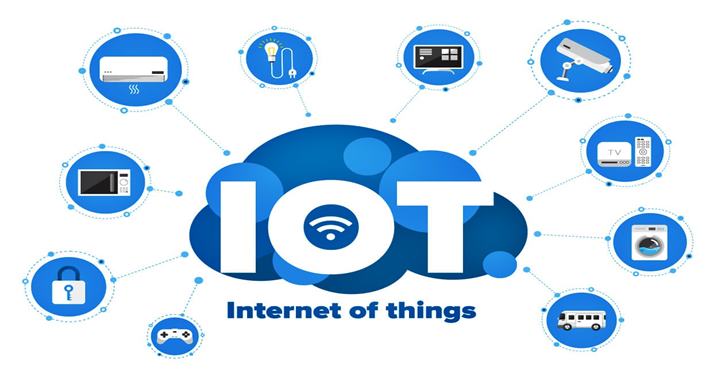
Uses of IoT
- Smart Homes: IoT enables the creation of smart homes where devices like thermostats, lights, security cameras, and appliances can be controlled and monitored remotely. This improves convenience, energy efficiency, and security.
- Healthcare: IoT devices can monitor patients’ health conditions remotely, enabling better management of chronic diseases and early detection of health issues. Wearable fitness trackers are a common example.
- Industrial IoT (IIoT): Industries use IoT for predictive maintenance of machinery, remote monitoring of production processes, and optimizing supply chains. This can improve efficiency and reduce downtime.
- Smart Cities: IoT technologies are used to monitor and manage urban infrastructure, such as traffic lights, waste management, public transportation, and energy consumption, making cities more efficient and sustainable.
- Agriculture: IoT can help farmers monitor crop health, soil conditions, and weather patterns. This leads to more efficient irrigation, reduced pesticide use, and increased yields.
- Retail: Retailers use IoT for inventory management, personalized customer experiences, and real-time monitoring of store conditions.
- Transportation: IoT can enhance transportation systems through vehicle-to-vehicle (V2V) and vehicle-to-infrastructure (V2I) communication, leading to safer and more efficient traffic flow.
- Energy Management: Smart grids and IoT-enabled devices allow for better management of energy distribution, reducing waste and optimizing energy consumption.
Benefits of IoT
- Efficiency: IoT optimizes processes and resource allocation, leading to improved efficiency in industries, transportation, and daily life.
- Data-Driven Insights: IoT generates vast amounts of data that can be analyzed to gain insights into consumer behavior, system performance, and more.
- Automation: IoT enables automation of various tasks, reducing the need for human intervention and freeing up time and resources.
- Cost Savings: Through predictive maintenance and energy optimization, IoT can lead to cost savings by reducing downtime and unnecessary resource usage.
- Enhanced Quality of Life: IoT-enabled healthcare, smart homes, and assistive technologies improve quality of life for individuals, especially those with disabilities or health concerns.
- Safety and Security: IoT can enhance security by enabling remote monitoring and control of security systems, reducing risks in various environments.
Future Prospects of IoT
- Mass Adoption: The number of connected devices is expected to grow exponentially, leading to even more integrated and interconnected environments.
- 5G Connectivity: The rollout of 5G networks will provide faster and more reliable connectivity, enabling more advanced and real-time IoT applications.
- Edge Computing: Processing data closer to the source (edge devices) will reduce latency and enable faster decision-making, critical for time-sensitive applications.
- Artificial Intelligence (AI) Integration: Combining IoT with AI will enable smarter decision-making based on real-time data analysis.
- Standardization and Interoperability: Efforts to standardize IoT protocols and ensure interoperability between devices will lead to a more seamless and integrated IoT ecosystem.
- Sustainability: IoT can play a role in achieving sustainability goals by optimizing resource usage and reducing waste in various sectors.
- Challenges: As IoT grows, challenges related to data privacy, security vulnerabilities, and ethical considerations will need to be addressed.
Overall, IoT has the potential to transform industries, improve quality of life, and reshape how we interact with the world around us. However, realizing its full potential will require addressing technical, regulatory, and ethical challenges while fostering innovation and collaboration.
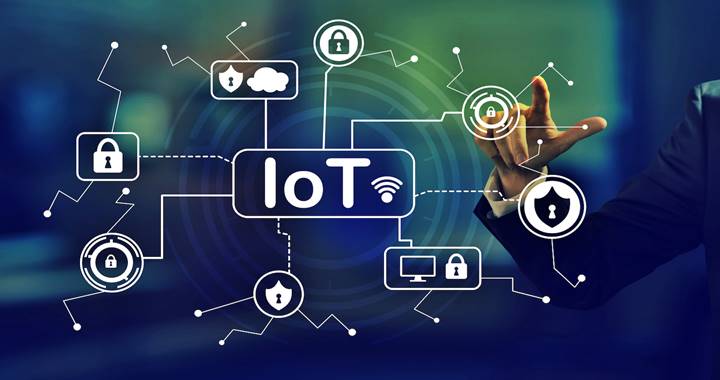
Challenges and Concerns of IoT
While IoT brings numerous benefits, it also raises important challenges and concerns that need to be addressed.
- 1. Privacy and Data Security: The extensive collection of personal data by IoT devices raises privacy concerns. Unauthorized access to this data could lead to identity theft, surveillance, or misuse of sensitive information.
- 2. Cybersecurity Threats: Connected devices are vulnerable to hacking and cyberattacks, which could compromise personal safety or enable malicious actors to gain control over critical systems.
- 3. Data Overload and Interpretation: The massive amount of data generated by IoT devices presents challenges in terms of data analysis and interpretation. Extracting meaningful insights from this data requires advanced analytics tools.
- 4. Ethical Considerations: The ethical implications of IoT range from the potential for biased algorithms to the dilemma of machine decision-making, raising questions about accountability and transparency.
Impact of IoT on Work and Lifestyle
IoT has reshaped both work environments and individual lifestyles.
- 1. Remote Work and Connectivity: IoT has facilitated remote work through seamless connectivity, enabling employees to collaborate effectively regardless of their physical location.
- 2. Changes in Consumption Patterns: Connected devices have influenced how consumers shop, with IoT-enabled e-commerce platforms and personalized recommendations shaping purchasing decisions.
- 3. Health and Wellness Management: IoT has empowered individuals to take charge of their health through wearable devices, encouraging a proactive approach to wellness and medical care.
Future Prospects of IoT and Considerations
The future of IoT holds promise, but also requires careful planning and ethical considerations.
- 1. Advancements in AI Integration: The integration of AI with IoT devices will enable autonomous decision-making, leading to smarter and more adaptive systems.
- 2. Human-Centric Design: Designing IoT systems with human well-being in mind will be crucial to ensure that technology enhances lives without sacrificing privacy or security.
- 3. Ethical and Legal Frameworks: As IoT continues to evolve, there is a need for robust ethical and legal frameworks to address privacy, security, and accountability concerns.
Applications of IoT in Business
IoT has permeated various aspects of business operations, opening up opportunities for optimization and growth.
- 1. Supply Chain Management: IoT-enabled sensors and trackers provide real-time visibility into the movement of goods, enabling accurate tracking, reduced lead times, and more efficient inventory management.
- 2. Manufacturing and Industry 4.0: IoT supports smart factories through predictive maintenance, real-time monitoring of production lines, and data-driven process optimization, resulting in reduced downtime and enhanced productivity.
- 3. Retail and Customer Engagement: IoT enhances the retail experience by enabling personalized marketing campaigns, tracking customer behaviors, and optimizing inventory levels to meet demand.
- 4. Energy Management: Businesses can optimize energy consumption through IoT-based systems that monitor usage patterns and adjust energy usage accordingly, leading to cost savings and environmental sustainability.
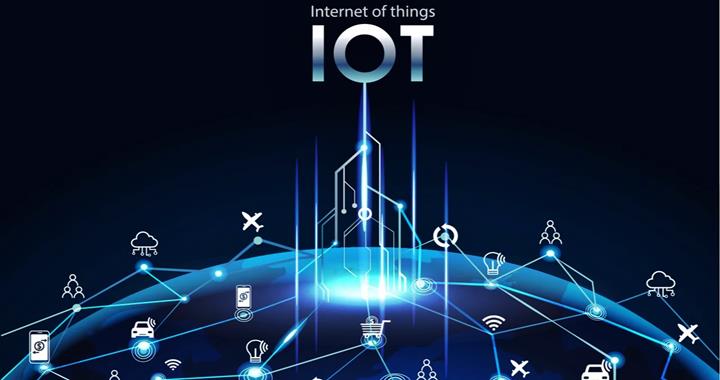
Benefits of IoT Integration
The integration of IoT technologies into business operations brings a myriad of benefits that impact efficiency, decision-making, and innovation.
- 1. Data-Driven Insights: IoT generates vast amounts of data that can be analyzed to extract actionable insights, helping businesses make informed decisions and adapt strategies.
- 2. Operational Efficiency: Automation and real-time monitoring facilitated by IoT streamline operations, reducing manual intervention, human errors, and operational costs.
- 3. Predictive Maintenance: IoT sensors collect data from machinery, allowing businesses to predict maintenance needs and schedule repairs before equipment failure occurs, minimizing downtime.
- 4. Improved Customer Experiences: IoT-enabled personalized experiences, from customized marketing messages to tailored product recommendations, enhance customer engagement and loyalty.
Challenges and Considerations of IoT
While IoT offers significant advantages, businesses must navigate challenges to ensure successful implementation.
- 1. Security Concerns: Connected devices are vulnerable to cyberattacks, highlighting the importance of robust security measures to protect sensitive data and systems.
- 2. Data Privacy and Compliance: IoT generates substantial amounts of user data, raising concerns about privacy and the need for compliance with data protection regulations.
- 3. Integration Complexity: Integrating IoT solutions into existing infrastructure requires careful planning and execution to ensure seamless functionality and interoperability.
- 3. Cost and ROI: The initial investment in IoT implementation can be substantial, necessitating a clear understanding of the return on investment (ROI) over the long term.
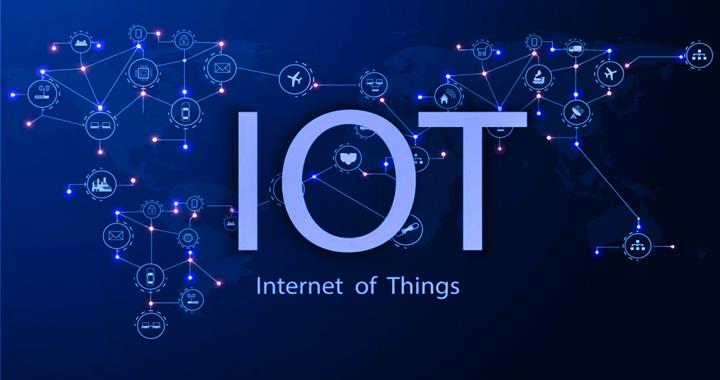
Future Trends and Outlook of IoT
The future of IoT in business holds several exciting trends and possibilities.
- 1. Edge Computing: Edge computing, which processes data closer to the source, will reduce latency and enhance real-time processing for IoT applications.
- 2. AI and Machine Learning Integration: Combining IoT with AI and machine learning will lead to more intelligent and autonomous systems capable of advanced decision-making.
- 3. Industry-Specific Solutions: As IoT continues to mature, industries will see tailored solutions that address specific challenges and capitalize on sector-specific opportunities.
- 4. Blockchain Integration: Blockchain technology could enhance security and data integrity in IoT systems, ensuring trustworthy data exchange and reducing fraud risks.
The Future of Human Life
- 1. Ubiquitous Connectivity: The future of human life is set to become increasingly interconnected, driven by the proliferation of IoT devices and their seamless integration into our surroundings.
- 2. Smart Environments: Smart homes, cities, and workplaces will become more prevalent, adapting to human needs in real-time. Buildings will adjust lighting, temperature, and security based on occupants’ preferences and presence.
- 3. Personalized Experiences: IoT-driven personalization will extend beyond marketing. Our surroundings, devices, and services will tailor themselves to our behaviors, preferences, and even emotional states.
- 4. Health and Wellness: Wearable IoT devices will continually monitor health metrics, allowing for early detection of medical conditions and enabling personalized treatment plans.
- 5. Transforming Industries: Industries across the board will be reshaped by IoT, leading to increased efficiency, automation, and novel business models.
- 6. Smart Manufacturing: IoT-enabled factories will operate autonomously, with machines communicating, diagnosing issues, and performing maintenance without human intervention.
- 7. Agriculture and Sustainability: Precision agriculture powered by IoT will optimize crop management, resource allocation, and sustainability practices, addressing global food security challenges.
- 8. Healthcare Revolution: IoT-driven telemedicine, remote patient monitoring, and AI-powered diagnostics will transform healthcare delivery, making it more accessible and personalized.
Challenges and Ethical Considerations of IoT
While IoT promises transformative benefits, it also raises significant challenges that must be addressed.
- 1. Privacy and Data Security: The continuous collection of personal data by IoT devices raises concerns about data breaches, identity theft, and the potential misuse of sensitive information.
- 2. Ethical AI and Decision-Making: As AI and IoT converge, devices may make autonomous decisions. Ensuring ethical outcomes and accountability for these decisions will be critical.
- 3. Digital Divide: Unequal access to IoT technologies could exacerbate existing social and economic inequalities, creating a “digital divide” between those who benefit and those who are left behind.
- 4. Environmental Impact: The proliferation of IoT devices and their energy consumption could have an adverse environmental impact. Striking a balance between technological advancement and sustainability will be vital.
Collaboration and Regulation of IoT
The responsible evolution of IoT requires collaborative efforts between industries, governments, and individuals.
- 1. Regulatory Frameworks: Governments must establish regulations that protect privacy, security, and data rights, while also fostering innovation and competitiveness.
- 2. Industry Standards: Creating standardized protocols for IoT devices and communication will enhance interoperability and security across ecosystems.
Conclusion
The history of IoT is a journey of innovation, imagination, and technological progression. From its conceptualization as an interconnected network of devices to its status as a transformative force, IoT has revolutionized industries, enhanced daily life, and opened the door to a future where technology and the physical world merge seamlessly. As IoT continues to evolve, the potential for innovation and impact remains boundless, promising to reshape our world in ways that were once thought to be the stuff of science fiction.
IoT has reshaped the business landscape, driving efficiency, enabling data-driven decision-making and fostering innovation. While challenges such as security and privacy concerns exist, the potential benefits far outweigh the drawbacks. Businesses that embrace IoT technology and proactively address challenges are poised to gain a competitive edge, enhance customer experiences, and drive growth in a rapidly evolving digital economy. As IoT continues to evolve and integrate with other technologies, its role in reshaping business operations and strategies will only become more pronounced.
The Internet of Things has transcended its status as a buzzword to become an integral part of our lives. Its applications span across diverse sectors, offering unparalleled benefits in terms of efficiency, data insights, user experiences, safety, and environmental sustainability. As IoT continues to evolve, driven by 5G, edge computing, AI integration, and more, its potential remains boundless. Embracing this interconnected future will not only shape industries but also redefine the way we interact with the world around us. The Internet of Things is not just a technological innovation; it’s a transformative force that’s reshaping the present and shaping the future.
Writer: Tahsin Ahmed
